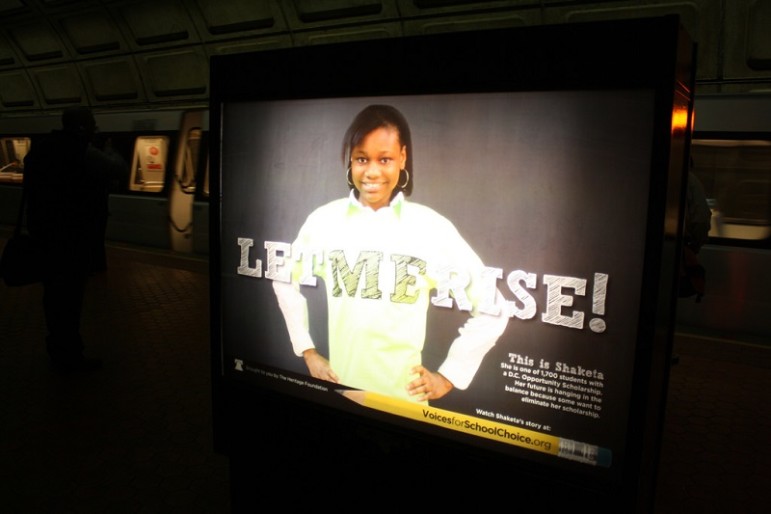
January 8, 2016; Chicago Tribune
What have market forces done to our public schools? A recently published study by Duke University researchers, “The Growing Segmentation of the Charter School Sector in North Carolina,” may help us answer that question—with insights that should trouble policymakers.
The authors provide a clear picture of how the marketplace looks as applied to the public education arena:
A defining characteristic of charter schools is that they introduce a strong market element into public education. In a standard private sector market with differentiated products, new firms enter a market in response to profit-making opportunities. Over time, the firms that are well run and that satisfy consumer preferences will tend to expand or be replicated while those that are less successful—perhaps because they are not well managed or because they misjudged the nature of the demand—will not attract and keep customers and consequently have to go out of business. As a result of this Darwinian process of entry and exit, one would predict that the firms that survive in a newly established market space would, as a group, become more successful over time in delivering what customers want. If we apply this reasoning to the market for schooling, more choice should produce a better educational fit between what schools offer and what parents want for their children and ultimately lead to better outcomes, at least in terms of the outcome most widely valued and readily measured: standardized test scores.
If schools are to be judged only on the basis of how their students perform, then the market’s “invisible hand” may have treated education well. Weak charters improved or closed. And those continuing to operate made improvements and learned from their experience to create better schools. But if one broadens one’s perspective to see individual schools as part of the larger system of public education, and place public education in a larger societal role beyond teaching the “three R’s,” there is much to be concerned about.
Researchers found that parents, given the option to be in more segregated schools, choose to do so:
The state’s charter schools, which started out disproportionately serving minority students, have been serving an increasingly white student population over time. In addition, during the period, individual charter schools have become increasingly racially imbalanced, in the sense that some are serving primarily minority students and others are serving primarily white students. The resulting market segmentation in the charter school sector reflects a major difference between charter schools and the typical textbook version of a private sector market. In the case of schools, consumers—in this case, parents—care not only about the quality of a school’s program but also the mix of students in the school. As a result, market forces will tend to lead not only to more satisfied consumers, but also to market segmentation, which in the case of schools is typically by the race of the student.
Fifty years ago, this was a preference that we felt public education must not honor. Have societal conditions really changed so much that we now should no longer care?
Because charter operators are responsible for their segment of public education and not the larger picture, they shape their “products” so they appeal to particular market segments. When “features” like transportation or school lunch that may be essential to lower income families are not required, the market may not really be open to all. This may place barriers to entry higher for some parts of the community than others and will impact the meaning of test score comparisons.
Sign up for our free newsletters
Subscribe to NPQ's newsletters to have our top stories delivered directly to your inbox.
By signing up, you agree to our privacy policy and terms of use, and to receive messages from NPQ and our partners.
The relatively high test scores gain of students in the charter schools at the end of our study period provides a misleading picture of the absolute effectiveness of charter schools relative to traditional public schools. In fact, our analysis of charter school effectiveness using test score models that control statistically for student selection with the use of student fixed effects shows no relative advantage for charter schools in reading and a disadvantage in math, at least for the students who switch. That is, the apparent success of the students switching from public schools to charter schools in recent years largely reflects the greater ability and motivation of the students who are switching…rather than the greater effectiveness of the charter schools relative to the traditional public schools.
Looked at in a larger context, the marketplace has resulted in a disturbing outcome: “Charter schools in North Carolina are increasingly serving the interests of relatively able white students in racially imbalanced schools and…despite improvements in the charter school sector over time, charters schools are still no more effective on average than traditional public schools.” The findings of the North Carolina study could provide guidance for all policymakers responsible for public education.
Chicago’s Public Schools have also turned to charters and the marketplace as key elements of their school improvement strategy. According to a Chicago Tribune study, currently, “Chicago Public Schools students who attend their assigned neighborhood schools are the minority now, as more than half of the district’s students choose charter, magnet and other options.”
Mary Pattillo, a Northwestern University sociology professor who has researched how parents negotiate school choice in Chicago, told the Tribune how social networks played an important role.
Once you get this phenomenon of so few neighborhood kids going to the school, then you have parents talking across generations and you have fewer and fewer information sources about the quality of the local public school. That means outdated or unfair reputations can linger, to the continued detriment of the neighborhood school. It’s unfortunate that parents don’t have high-quality options that are close by so they can simultaneously meet something that they want when they talk about schools: They want close, convenient and good. When it’s not good, they exercise choice.
For Forrest Claypool, Chicago Public Schools’ superintendent, these larger concerns seem not to be on the table. “‘Parents…don’t really care about neighborhood enrollment boundaries—they care about quality choices for their children. I think that’s a good thing. I think it’s central to social justice, that parents have choices. That’s important, and that they be quality choices.”
But if North Carolina’s experience has a lesson for Chicago, it is about the racial and economic segregation that may come along with this open market. “People who are choice advocates will say that this is a market demonstration,” said Eve Ewing, a sociologist at Harvard University and Chicago native. “The question is, what is the cost for the neighborhood in the long term, and also what is the cost for the kids who are in the school, still?”
Will we be happy if choice works and test scores on average go up, but the differences between the top and the bottom widen and have a strong racial and class taint? That is a question for educational leaders and policymakers to take very seriously.—Martin Levine













